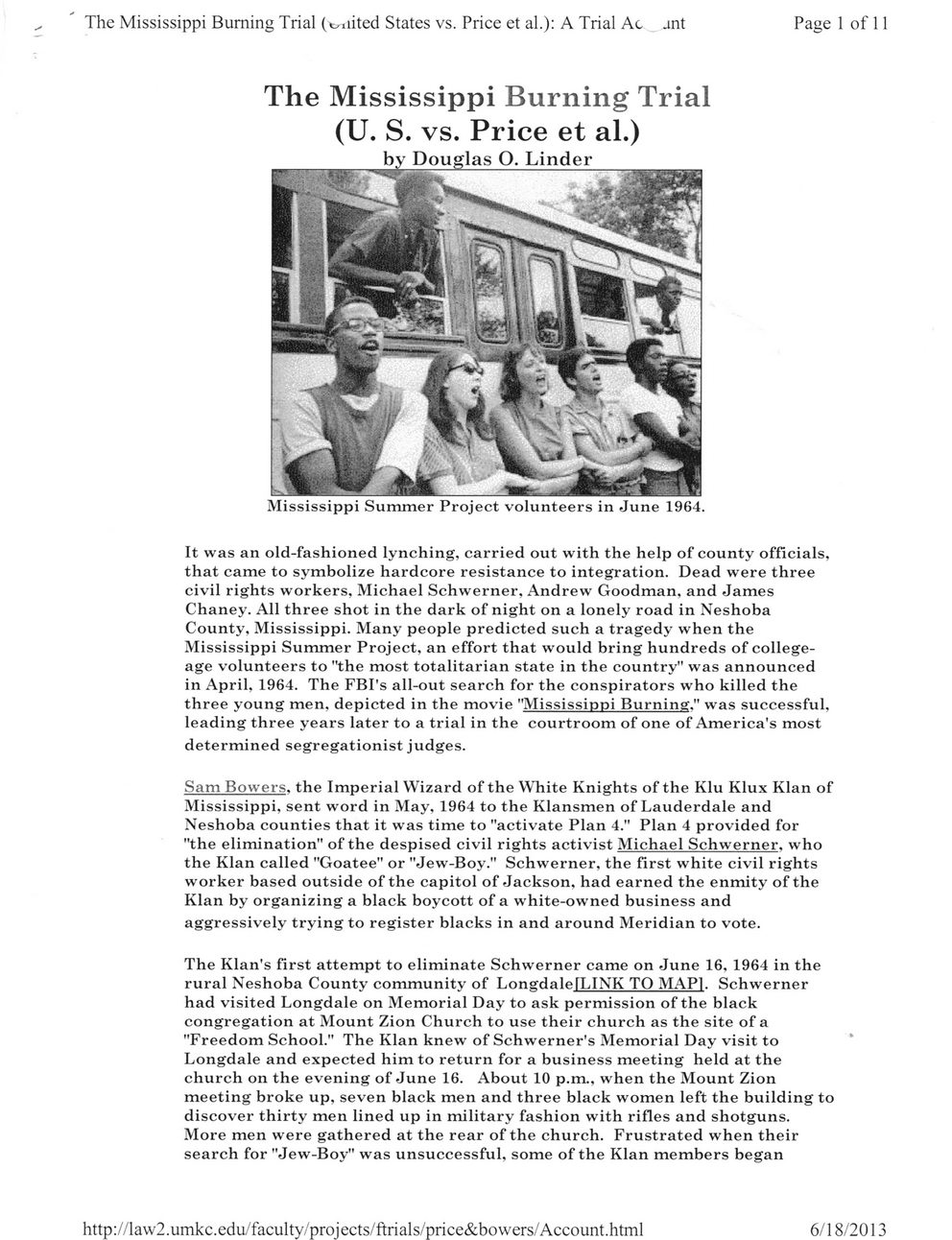This text was obtained via automated optical character recognition.
It has not been edited and may therefore contain several errors.
The Mississippi Burning Trial (t,iiited States vs. Price et al.): A Trial Ac ant Page 1 of 11 The Mississippi Burning Trial (U. S. vs. Price et al.) Mississippi Summer Project volunteers in June 1964. It was an old-fashioned lynching, carried out with the help of county officials, that came to symbolize hardcore resistance to integration. Dead were three civil rights workers, Michael Schwerner, Andrew Goodman, and James Chaney. All three shot in the dark of night on a lonely road in Neshoba County, Mississippi. Many people predicted such a tragedy when the Mississippi Summer Project, an effort that would bring hundreds of college-age volunteers to "the most totalitarian state in the country" was announced in April, 1964. The FBI's all-out search for the conspirators who killed the three young men, depicted in the movie "Mississippi Burning." was successful, leading three years later to a trial in the courtroom of one of America's most determined segregationist judges. Sam Bowers, the Imperial Wizard of the White Knights of the Klu Klux Klan of Mississippi, sent word in May, 1964 to the Klansmen of Lauderdale and Neshoba counties that it was time to "activate Plan 4." Plan 4 provided for "the elimination" of the despised civil rights activist Michael Schwerner. who the Klan called "Goatee" or "Jew-Boy." Schwerner, the first white civil rights worker based outside of the capitol of Jackson, had earned the enmity of the Klan by organizing a black boycott of a white-owned business and aggressively trying to register blacks in and around Meridian to vote. The Klan's first attempt to eliminate Schwerner came on June 16, 1964 in the rural Neshoba County community of Longdale TLINK TO MAPI. Schwerner had visited Longdale on Memorial Day to ask permission of the black congregation at Mount Zion Church to use their church as the site of a "Freedom School." The Klan knew of Schwerner's Memorial Day visit to Longdale and expected him to return for a business meeting held at the church on the evening of June 16. About 10 p.m., when the Mount Zion meeting broke up, seven black men and three black women left the building to discover thirty men lined up in military fashion with rifles and shotguns. More men were gathered at the rear of the church. Frustrated when their search for "Jew-Boy" was unsuccessful, some of the Klan members began http://law2.umkc.edu/faculty/projects/ftrials/price&bowers/Account.html 6/18/2013

Ku Klux Klan Mississippi-Burning-Trial-(1)